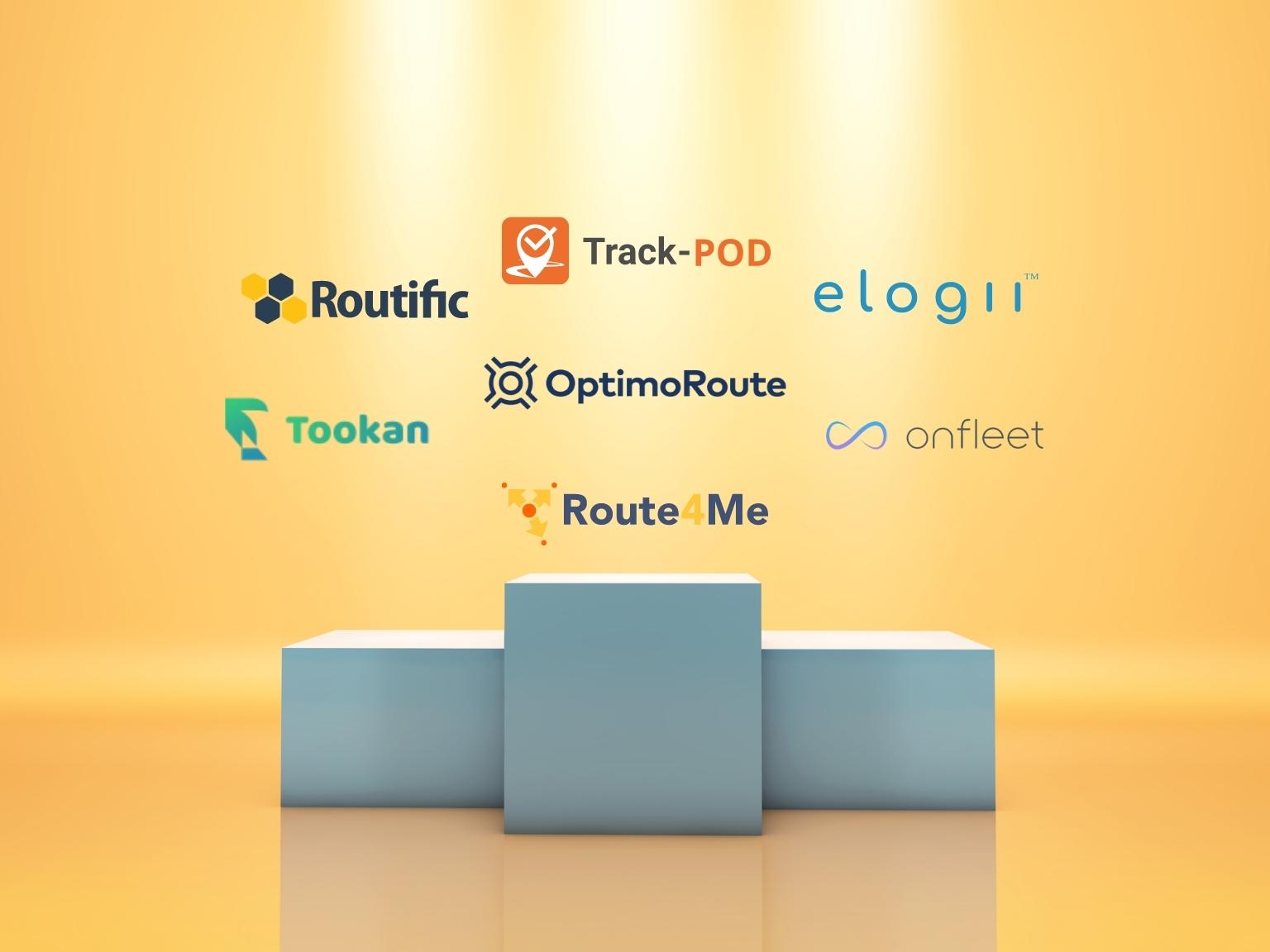Best Route Planning Software in 2025
This guide compares Track-POD, RouteManager, Circuit, and Upper, covering features, pricing, routing quality, and best-fit scenarios to help businesses choose the best route planning software for 2025.
Read More

Behind every successful delivery operation is a good route optimization algorithm.
What makes a good algorithm? Well, it comes with good route optimization software.
In this blog post, we compare route optimization algorithms of top-rated route planners by looking at what kind of features they cover.
Let's hit the road.
When looking for an optimal solution for your delivery operation, it's important to understand the basics of a route optimization algorithm.
Route optimization serves the purpose of finding the shortest possible routes (shortest distance and travel time) for a large number of vehicles.
While you can absolutely use free tools like Google Maps to find the shortest path for your personal travel, routing a fleet of vehicles requires advanced route planning that uses optimization algorithms.
Even if you have one commercial vehicle in your fleet, using a route optimization algorithm is how you make sure every delivery route is an efficient route in terms of resource utilization.
Meanwhile, to build the most optimal routes in real-time you need dynamic route optimization, i.e. one that gives you the flexibility to cater to customer requirements.
How do you know you've chosen the right algorithm for all the types of route planning you will be doing? You look at the features the algorithm powers.

Assessing a route optimization algorithm without getting technical is doable by evaluating the must-have features that a route planner for teams should have.
Managing a delivery operation involves dealing with all kinds of routes. Not every route will be as simple as getting from A to B in one go. Sometimes, routes extend over large territories and take more than one day to complete.
An advanced route optimization algorithm will be able to build routes for overnight deliveries and long-haul deliveries, e.g. across state borders.
The multi-day routing feature is completed with features such as driver's breaks and truck driver safety checklist - to make sure your team is safe and sound on the road.
If you provide on demand delivery or any kind of services that require your drivers to make round trips from the depot to customers' locations, you need to make sure your route optimization algorithm supports multiple routes per driver per day.
This enables you to upload delivery or collection jobs into the system and create multiple round trips for each courier. They will then need to fulfill the orders within one day and you'll be done with routing all of them in one go.
Being able to create more than one depot in your route planning system is essential for businesses that have multiple warehouse or production locations.
Therefore, your route optimization algorithm needs to be able to build routes from/to more than one depot. Ideally, you should have a directory of depots in your routing system that you can build and use in delivery planning and route optimization.
Delivery and collection tasks both need advanced route planning solutions. However, they're not exactly the same when it comes to routing and optimization.
Your route optimization algorithm needs to be able to process both deliveries and collections and build routes for your drivers considering every type of job to be done for the day.
If you manage a team of delivery drivers and want to make sure every driver gets roughly the same workload (distance to be traveled and orders to be delivered), look for routing software that supports auto-balance of orders.
This is how you can use a route optimization algorithm to make sure your delivery driver performance evaluation is always fair based on an equal workload.
A route optimization algorithm that only uses one strategy for building routes might not be enough when you're trying to make the most of your resources.
Optimization can and should happen by different scenarios so that you can assess profitability, time, mileage, etc. before you dispatch the routes and go for the best setup.
Using different optimization strategies is how you can minimize overall operational costs and handle fuel prices and other expenses outside of your control.
Being able to set custom locations for route start and finish is a nice to have for any delivery operation and a must-have for operations working with contract drivers using their own vehicles.
What this feature allows you to do is set the driver's home location as your route start or finish location and incorporate it into route planning and optimization.
This way your route optimization algorithm can build a workflow where your driver starts the route from home, visits a depot location to pick up packages, and then finishes the route at their home address.
Map-based routing means you can plan and optimize routes while interacting with the map. For example, you can capture dropoff locations and routes on the map - in bulk for a specific area or one by one - and drop them for optimization.
This helps visualize your service areas and have a better picture of where your drivers will be heading throughout the day.
Time slots is an industry standard in last-mile delivery. Customers want options, convenience, and flexibility, and being able to specify a time window for delivery enables you to meet all 3 of these requirements.
In order to give your customers flexibility, you need a route optimization algorithm that considers preferred time slots when building and optimizing routes.
Geofencing is an essential feature of routing software that allows you to assign geo areas to drivers and make sure they only operate within a given area.
On the one hand, this is convenient as drivers get to know their areas very well and can navigate customer addresses faster. On the other hand, you can make sure a driver can't submit electronic Proof of Delivery if they're located outside of their assigned service area.
Any advanced route optimization algorithm needs to be able to route for different types of vehicles in your fleet. For example, if you have both trucks and cargo bikes in your fleet you need a route planner that treats them differently.
Different vehicles have different capacities and restrictions associated with them. A route optimization algorithm that works for varied fleets can process that in seconds so that you don't have to keep everything in mind.
A big part of fleet optimization is making the most of vehicle space. It's not about jam-packing as many orders as you can into a vehicle; it's about making sure the goods are loaded in a way that minimizes damage and returns.
Optimization by vehicle capacity is a key part of any route optimization algorithm. To make sure you're getting the most of your route planner tool, check that it offers optimization by volume.
Choosing the best route optimization algorithm for your operational needs boils down to comparing features that top-rated route planners for teams have to offer.
Some of them provide out-of-the-box solutions and some offer add-ons and customizations. Ultimately, all of them can do a decent job for all logistics operations and an excellent job for operations whose needs they match.
To save you time on research and free trials, here's an overview of the best route optimization algorithms for delivery teams in 2022.

Choosing the best route optimization algorithm without getting too technical is about looking at the use cases of every route optimization feature and seeing if it matches your operational needs.
I hope this overview of route optimization algorithms helps you make an informed choice and makes your life as a manager easier.
If you're curious about Track-POD's solutions to route optimization and Proof of Delivery, book a free demo and we'll give you a guided tour.